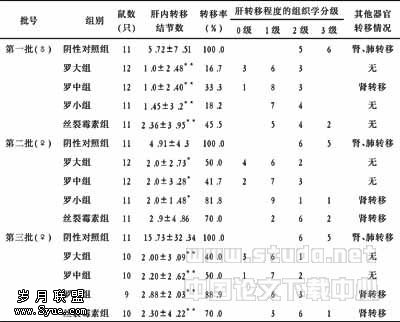Maroni公式评估慢性肾脏病患者饮食蛋白质摄入在国人中的应用
【摘要】 目的 了解Maroni公式是否能准确反映我国慢性肾脏病(CKD)患者的每日蛋白质摄入(eDPI)情况。 方法 选择2006年11月至2007年4月住院的各期CKD患者100例,根据24h尿蛋白排泄量分为A、B、C三组,营养膳食科根据其标准体重、原发病及肾功能分级制订相应的饮食方案,3d后收集其24h尿液标本测定24h尿尿素氮量(UUN),根据Maroni公式,利用24h UUN来估算患者eDPI,并与患者留取尿液标本当日实际营养处方的DPI配对,以验证两者符合率。 结果 三组CKD患者应用Maroni公式估算的eDPI与其当日实际营养处方的DPI相比,P均>0.05,无显著性差异。 结论 本研究结果提示24h尿蛋白排泄量不影响应用Maroni公式估算的我国CKD患者eDPI。通过该公式估算的我国各期CKD患者的eDPI与实际营养处方的DPI一致。因此, Maroni公式是适用评估我国CKD患者饮食蛋白质摄入的一种简便、准确的方法。
【关键词】 慢性肾脏病 每日蛋白质摄入 Maroni公式
【Abstract】 Objective To validate the Maroni’s Formula of estimating protein intake of Chinese patients with chronic kidney disease. Methods From November 2006 to April 2007, 100 cases of the CKD patients were assigned to 3 groups according to their 24 hours urine protein excretion amount: A group, 24 hours urine protein excretion amount > 3.0g/24h ; B group, <3.0g/24h but> 1.0g/24h ; and C group, <1.0g/24h . They were given appropriate diet based on their GFR , and their 24 hours UUN were detected 3 days after to estimate their protein intake by the Maroni’s Formula ,then their eDPI were compared with their prescribed DPI on the same day. Results The eDPIs of A、B、C groups and their prescribed DPIs respectively did not differ statistically by paired analysis(P>0.1)as well as those in the total population of the 100 patients. Conclusion This study suggests that the Maroni’s formula of estimating protein intake is valid to Chinese patients with chronic kidney disease as same as it do to the patients of Occidental country , and there was no difference among the three subgroups.
【Key words】 Chronic kidney disease Diet protein intake Maronis formula
据目前国际肾脏病流行病学调查显示,慢性肾脏病(Chronic Kindney Disease ,CKD)的发病率高达10%左右。大量的临床资料证明:合理的低蛋白饮食(Low Protein Diet ,LPD) 可减少CKD患者盐、磷、尿酸及许多含氮代谢废物的积聚,从而避免由此导致的代谢性酸中毒、肾性骨病、胰岛素抵抗的发生,减轻其尿毒症的症状,减少CKD相关的并发症,甚至可延缓慢性肾脏功能不全的进展速度[1~12]。 Levey等[4]分析了MDRD研究(1989~1993年)及MDRD研究的长期随访(1993~2000年),发现LPD短期有效,长期无显效,这可能与患者对LPD治疗的依从性差有关。Locatelli F[5]等的观察也提示LPD可延缓肾衰的进展,但LPD依从性较正常蛋白质饮食组低。一直以来,如何提高CKD患者对LPD的依从性是困扰肾科医生的一个问题。
Pollock等[13]的研究提示通过健康宣教是可提高患者对LPD的依从性。但是,如何评定患者是否确实已经实施了LPD呢? Maroni[14]等通过对19例患者的氮平衡的研究,推导出通过检测患者的24h尿尿素氮量(Urine Urea Nitrogen ,UUN)估算患者的DPI的Maroni公式:DPI(g/24h)= 6.25 (UUN+ 0.031 体重) (/24h)。
Masud T等[15]的研究显示可应用Maroni公式来精确估算患者的DPI、改善患者对于低蛋白饮食的顺应性。但是,这是以欧美人群为实验对象得出的结果,Maroni公式是否也适用于亚裔人群,国内未见有验证该公式的准确性。因此,作者选择住院的CKD患者,通过给予定量的蛋白饮食、并检测患者的24h UUN来验证Maroni公式, 以了解Maroni公式是否同样适用于评估我国CKD患者蛋白质摄入量。
1 临床资料
1.1 一般资料
2006年11月至2007年4月住院的各期CKD患者100例,其中男46例,女54例;年龄14~79岁。根据24h尿蛋白排泄量分为A、B、C三组,A组尿蛋白排泄量>3g/24h;B组1.0g~3.0g/24h;C组<1.0g/24h。
1.2 方法
住院后均即测身高、体重,查肝功能、肾功能、血脂、血常规、24h尿蛋白定量、内生肌酐清除率【24-hours-urine creatinine clearance ,CCr [ml/(min·1.73m2)]】等,请营养膳食科根据其标准体重、原发病及肾功能分级制订其相应的饮食方案,蛋白摄入量分别为0.4~1.3g/(kg·d),热量为30~35kcal/(kg·d),3d后收集其24h尿液标本测定其24h UUN等,根据Maroni公式利用24h UUN来估算患者的eDPI,与当日实际营养处方的DPI配对。
1.3 公式
标准体重(kg)=身高(cm)-105,身高体重指数BMI=体重(kg)/身高(m)2,Maroni公式:DPI(g/24h)= 6.25 (UUN+ 0.031 体重) (/24h)。注: UUN 为 尿 尿素氮 量 (g/24h) ;体重以 Kg 作单位。系数换算: UUN 及 BUN : 1mmol/L =2.8mg/dl=0.028g/L内,生肌酐清除率CCr (ml/min)=(Ucr×UV)/(Scr×1440)/1.73 m2 / m2注:Ucr为尿肌酐浓度(μmol/L),UV为24h尿量(ml/1440min),Scr为血肌酐浓度(μmol/L)。
1.4 统计学方法
A、B、C三组之间计数资料两两比较采用独立样本的t检验。根据Maroni公式估算的eDPI与实际营养处方的DPI配对进行配对t检验。计算软件为SPSS 12.0软件包。
2 结果
2.1 一般情况
100例CKD患者平均年龄、性别比例、原发病情况见表1。各组患者的身高、体重及血、尿生化等指标见表2。
2.2 各组应用Maroni公式估算的eDPI与当日患者实际营养处方的DPI的比较
100例患者处方饮食热量为30~35kcal/(kg·d)。三组患者应用Maroni公式估算的eDPI与其当日实际营养处方的DPI相比均P>0.05,差异无显著性。所有患者eDPI与DPI相比也P>0.05,无显著性差异。见表3。表1 各组患者的一般情况(略)注:与A组相比?P>0.05,与B组相比#P>0.05 表2 各组患者的身高、体重及血、尿生化等指标(略)表3 各组eDPI与DPI比较结果(略)注:与DPI相比?P>0.05
3 讨论
限制蛋白质饮食是治疗慢性肾脏病(CKD),特别是慢性肾衰竭的一个重要环节。对MDRD研究的再分析[3,4]、Pedrini等[2]及Fouque等的荟萃分析[6]均提示LPD可延缓CKD的进展。大量循证医学证据显示LPD对CKD有许多益处,如改善肾脏血流动力学、促进蛋白质合成代谢、减少蛋白尿、改善局部RAS、防止产生过量活性氧、增加肾素-血管紧张素系统阻滞剂的降蛋白尿作用、减少代谢性酸中毒、纠正胰岛素抵抗和脂质代谢异常、改善消化道症状、纠正甲状旁腺功能亢进、防止盐摄入过多的有害效应,故低蛋白饮食不仅改善尿毒症症状,也不会造成营养不良。
但是临床上在实施低蛋白饮食治疗时,必须对患者治疗顺从性及营养状况进行密切监测,以防营养不良发生。氮表现率蛋白相当量或总氮排出量蛋白相当量(Normalized Protein Equivalent of Nitrogen Appearance Rate,nPNA),是反映营养状况和蛋白摄入水平的较好指标。其方法是测定患者24h尿尿素排泄量,腹膜透析患者还应测24h腹透液尿素排泄量,然后计算氮表现率蛋白相当量(protein nitrogen appearance rate,PNA)或蛋白分解代谢率(protein catabolic rate,PCR),在氮平衡情况下,其值应与蛋白入量相等。
上述的计算方法较繁琐,而且必须强调,只有当患者病情相对稳定、无高分解代谢因素时,方可应用nPNA计算“蛋白相当量”;当患者发生明显高分解代谢因素时,用nPNA推算饮食蛋白质摄入时,应注意避免过高估计nPNA的“蛋白相当量”,因此时蛋白质实际摄入量常低于nPNA数值。因此,有必要寻求一种可以简单地检测氮摄入的方法以评估LPD的有效性。
Maroni等[14]对19例CRF患者进行了氮平衡的研究,19例患者给予不限蛋白饮食,收集其24hUUN,并根据测定14C标记的尿素分布容积来计算尿素池,结果发现非尿素氮排泄的均值为0.031 g/(kg·d)。因此认为由于从食物蛋白质或内生蛋白质分解后产生的氮主要存在于尿素里,故排泄的尿素氮加上体内已有的尿素氮之和应该与摄入的蛋白质量一致。另外,摄入蛋白质对尿中其他含氮有机物比如尿酸、肌酐、胺类等的氮排出以及大便中非尿素氮排出影响不大,这两者一般占0.031 g/(kg·d)。因此,可用24 h尿尿素氮排泄量与这个估算的非尿素氮排泄量之和来评价1d的蛋白质摄入。此即Maroni公式:DPI(g/24h)= 6.25 (UUN+ 0.031 体重) (/24h)。
Masud T等[15]先后5次对52例CKD患者做了80份氮平衡的研究,结果同样认为在DPI为0.4~1.0g/(kg·d)的CKD患者的粪氮是恒定的,与饮食中摄入氮无关,但与体重相关,系数为0.031 g/(kg·d), 再次证实了在欧美人群,Maroni公式是适用评估CKD患者饮食蛋白质摄入的一种简便、准确的方法。
但在我国有些医生虽然认识到LPD的疗效,但他们认为在临床上应用十分困难,认为LPD或VLPD实际应用似乎不大可能。因此虽然认识到LPD的益处,但不能从实践上接受LPD。国内也未见对于氮平衡的研究。
作者观察的结果提示根据Maroni公式估算的DPI,与实际营养处方的DPI无显著性差异。考虑到尿蛋白的排泄也许会影响24 h尿素氮排泄量,因此又根据尿蛋白的排泄量分为3组,但是无论尿蛋白高低,各组根据Maroni公式估算的DPI,与实际营养处方的DPI均无显著性差异,P>0.5。推测尿蛋白排泄量对结果可能影响不大。因此,与欧美人群的研究结果相似, Maroni公式同样是适用评估我国CKD患者饮食蛋白质摄入的一种简便、准确的方法。
【】
1 Mandayam S, Mitch WE. Dietary protein restriction benefits patients with chronic kidney disease. Nephrology,2006,11:53~57.
2 Pedrini M T, Levey A S, Lau J, et al. The Effect of Dietary Protein Restriction on the Progression of Diabetic and Nondiabetic Renal Disease. Annal of Internal Medicine,1996,124(7):627~632.
3 Levey A S, Greene T, Beck G J, et al. Dietary Protein Restriction and Progression of Chronic Renal Disease: What Have all of the Results of the MDRD Study Shown. J Am Soc Nephrol,1999,10:2426~2439.
4 Levey A S, Greene T, Sarnak M J, et al. Effect of Dietary Protein Restriction on the Progression of Kidney Disease: Long-Term Follow-Up of the Modification of Diet in Renal Disease(MDRD) Study. Am J Kidney Dis,2006,48(6): 879~888.
5 Locatelli F, Alberti D, Graziani G, et al.Prospective, Randmized, Multicenter Trial of Effect of Protein Restriction on Progression of Chronic Renal-insufficiency ?Lancet June 1 ,1991, 337 (8753): 1299~1304.
6 Fouque D, Wang P, Laville M, et al. Low protein diets delay end-stage renal disease in non-diabetic adults with chronic renal failure. Nephrol Dial Transplant ,2000,15:1986~1992.
7 Aparicio M, Chauveau P, Combe C, et al. Low Protein Diets and Outcome of Renal Patients. J Nephrol , 2001,14:433~439.
8 Gabor Zakar for the study group. The Effect of Keto Acid Supplement on the Course of Chronic Renal Failure and Nutritional Parameters in Predialysis Patients and Patients on Regular Hemodialysis Therapy: The Hungarian Ketosteril Cohort Study. Wien Klin Wochenschr ,2001,113(17~18):688~694.
9 Feiten S F, Draibe S A, Watanabe R, et al. Short-term effects of a very-low-protein diet supplemented with ketoacids in nondialyzed chronic kidney disease patients. European Journal of Clinical Nutrition ,2005,59:129~136 .
10 Kopple J D, Greene T, Chumlea W C, et al. Relationship between nutritional status and the glomerular filtration rate: results from the MDRD study. Kidney Int,2000,57(4):1688~1703.
11 Bernard S, Fouque D, Laville M, et al. Effects of Low-Protein Diet Supplemented with Ketoacids on Plasma Lipids in Adult Chronic Renal Failure. Miner Electrolyte Metab,1996,22:143~146.
12 Teplan V, Schück O, Knotek A, et al. Enhanced Metabolic Effect of Erythropoietin and Keto Acids in CRF Patients on Low-Protein Diet: Czech Multicenter Study. Am J Kidney Dis,2003, 41(3), Suppl 1 (March): 26~30.
13 Pollock CA, Ibels L S, Zhu F Y, et al. Protein intake in renal disease. J Am Soc Nephrol,1997,8:777~783.
14 Maroni B J , Steinman T I and Mitch W E. A Method for estimating nitrogen intake of patients with chronic renal failure. Kidney Int,1985,27:58~65.
15 Masud T, Manatunga A, Cotsonis G, et al. The precision of. estimating protein intake of patients with chronic renal failure. Kidney Int, 2002, 62(5): 1750~1756.
16 Cianciaruso B, Capuano A, D'Amaro E, et al. Dietary compliance to a low protein diet: four years' experience of a single unit in the Naples area. Contrib Nephrol,1990,81:107~114.
17 Cianciaruso B, Capuano A, D'Amaro E, et al. Dietary compliance to a low protein and phosphate diet in patients with chronic renal failure. Kidney Int Suppl,1989,27:173~176.











